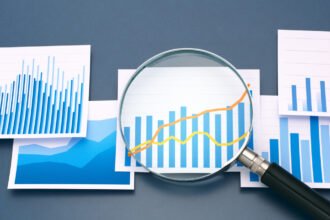In a court of law, probate is carried out as a judicial process. The probate process is one where the will of the deceased is accepted as a valid public document – in other words, this process makes sure that the last testament in question is, in fact, the true last testament. The probate process also involves itself in the case that the deceased did not leave behind a legal will – in such a case, the laws of intestacy in the state of residence (or real property) settle the estate.
- 1. Filing the petition and notifying beneficiaries and heirs
- 2. The notice should be given to all known creditors of the estate so that inventory of the estate can be carried out
- 3. Debts, taxes, funeral and estate expenses need to be paid for from the estate
- 4. The will explains how legal title in property is transferred – in the case of the deceased not leaving a will, the laws of intestacy decide
- Big Data and the Legal Profession
- Background Checks through Big Data
It might sound grim, but big data, legal proceedings, and death do meet at a crossroads more often than we think. Perhaps the only things certain in life, these days, are death, taxes, and big data.
The Probate Process – Step by Step
So, what exactly takes place during the probate process? Let’s try to explain the process before we delve into big data’s role here.
Basically, probate (or the granting thereof) is the first stage in a legal process regarding the administering of the estate of one who’s deceased. During the process, the court decides whether the will of the deceased is valid. If so, the will gains approval – in legal terminology, the executor is granted probate by the judicial court. When this happens, the will of the deceased transforms into a legal instrument that can be enforced by the executor in the law courts if necessary.
The probate process, in fact, will also name a said executor (usually, an individual whose name is in the will). The executor has the legal right, then to distribute (or dispose of) the assets of the deceased as is spelt out in the will. On the other hand, the will of the deceased can also be contested or challenged in a probate process.
In a nutshell, the legal proceedings of the probate process in the United States occur in four steps.
1. Filing the petition and notifying beneficiaries and heirs
First and foremost, the will needs to be admitted and the executor should be appointed. As mentioned earlier, if there is no will, an administrator of the estate needs to be appointed. However, all beneficiaries and heirs of the deceased must be notified of the court hearing – this is so that each is given the opportunity to object to the petition in court. Notice of the probate hearing published in local newspapers, for example, also serve to parties like unknown creditors of the deceased of the court proceeding.
2. The notice should be given to all known creditors of the estate so that inventory of the estate can be carried out
The executor, or personal representative, of the probate process, must send written notice to all creditors of the estate. Creditors, then, have a limited to lay a claim on assets included in the estate (this varies, depending on where in the United States you’re located).
Inventory is taken of all probate property – this includes stocks, bonds, property, business interests, etc. Sometimes, where non-cash assets are involved, an independent appraiser could be hired by the estate for evaluation. It’s also important to note that if creditors do not make their claims in time, their claims are extinguished, much like a bankruptcy case. This also applies if a creditor’s claims are of lesser priority than other creditors or beneficiaries.
3. Debts, taxes, funeral and estate expenses need to be paid for from the estate
The executor needs to make sure that all these bills, as well as claims from creditors, are paid from the estate. There are instances where the executor is allowed to sell some of the assets of the estate so that the obligations of the deceased are taken care of.
4. The will explains how legal title in property is transferred – in the case of the deceased not leaving a will, the laws of intestacy decide
Once all the above steps are complete – creditors have filed claims and bills have been paid – the assets that remain will then be distributed to the beneficiaries, as per the executor’s petition.
Big Data and the Legal Profession
As you’d imagine, the probate process can potentially be an arduous one. After all, the legal profession is known to be one of the conservative professional sectors. Even so, technology and big data have been making waves in the industry in recent years.
It began when big data tools helped greatly when it came to more mundane functions, like time management and billing. This has extended into marketing and customer relations, but innovations and application of big data in the digital age has allowed the legal sphere to use this availability and categorization of information to the industry’s advantage.
Background Checks through Big Data
Of course, there are pros to having big data involved in legal proceedings, probate processes included. What’s even more advantageous can be a lawyer who knows how to use big data and tech in ways which are novel and add value to the industry, its clients, and the individual cases.
As is the nature of the probate process in that it deals with the deceased, these can often be sensitive proceedings. It’s necessary, therefore, that they move forward as seamlessly as possible (this is not always the case, but one should strive for the ideal). Long-lost family members may even be sought if they’re listed as heirs or beneficiaries, adding to the already tense situation – Nuwber provides access to accurate and reliable information to find estranged relatives and to verify the identities of beneficiaries.
Such tools also help in the case of creditors who lay claim at judicial proceedings of the probate. Big data allows more swift, cutting-edge methods to verify the identities, backgrounds, and the nature of creditors who may come forth.
A lawyer with the ability and expertise in using smart legal systems knows that they can provide valuable insight without as little delay as possible. In the case of contestations, it’s access to big data and knowing how to employ it in a judicial court that could even swing a case.










